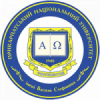Use of Information and Communication Technologies in the Inclusive Process of Educational Institutions
DOI:
https://doi.org/10.15330/jpnu.7.1.15-23Keywords:
inclusive education, ICT,, children with disabilities, computer integrated learning environment, general secondary educationAbstract
The article substantiates the relevance of the problem of using information and communication technologies (ICT) to partially solve the problem of accessibility to education for certain categories of people with disabilities and improving the quality of educational services. Theneed for introducing open access repositories with educational and scientific content is emphasized, which will allow alternative ways of gaining knowledge despite time or space constraints. The advantages and disadvantages of using ICT in the inclusive process are outlined, and their main types are proposed which can be used to support inclusive education. The features of creating an effective computer-integrated learning environment in the inclusive process are identified, forms and methods of working with children with special needs using ICT are presented. The authors display the results of a survey of teachers regarding their attitude to this problem and their professional skills in using ICT in the educational process of a general secondary educational institution. The article focuses on the necessity to study and promote assistive technologies in inclusive learning, which are developed today in the world to enable people with disabilities to get education and their social integration. These technologies give people the opportunity to learn effectively, receive new information, communicate through devices to control computer equipment, including remotely; reading electrical signals, etc. The difficulties of implementing ICT in inclusive education of Ukraine are substantiated, among them: high cost of ICT, especially assistive technologies; lack of computer software at educational institutions, lack of powerful internet, especially in rural areas; low level of digital literacy of teachers, especially regarding the use of special training tools; often their conservative attitude to innovations, online communication with students with special educational needs; the lack of support for such students as for the use of specialized ICTs and others.










